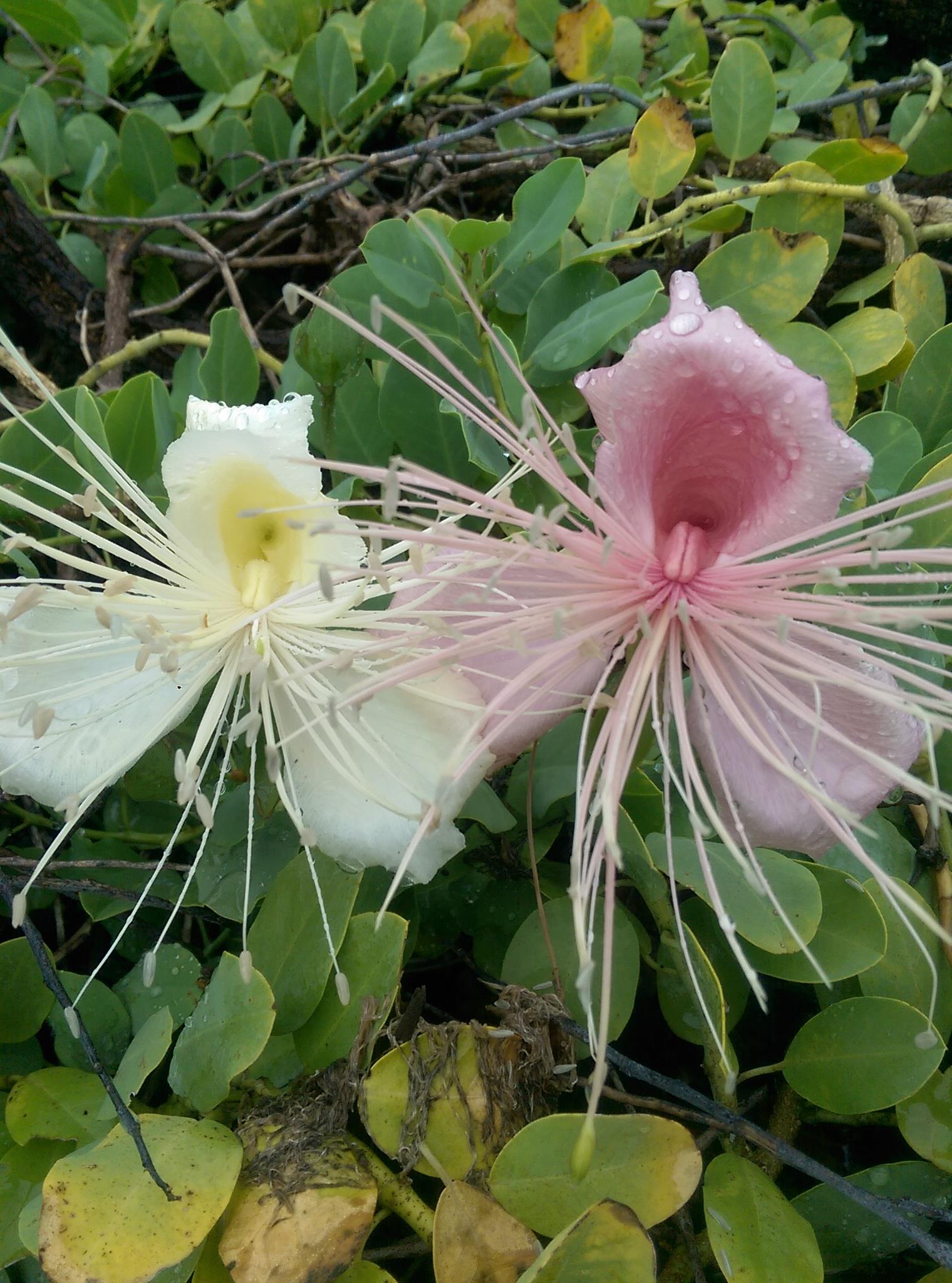Maiapilo is the only Hawaiian native representative of the Capparis (Caper) family and is scattered across coastlines on Pihemanu (Midway Atoll), Holoikauaua (Pearl and Hermes Atoll), Kauō (Laysan), and all of the main Hawaiian Islands. It occurs from sea level to approximately 325’, but may be found much further upland in some places. Maiapilo is a woody shrub with fleshy, glaucous (bluish-green) leaves that can be ovate to elliptic and approximately 1-3 inches long. The large white and pink flowers are arguably the most interesting feature on this plant, opening up after sunset to reveal numerous white stamens and an incredible fragrance. The flowers are then pollinated by native moths which spread the pollen as they feed on the nectar within the flower. Fruits will develop as a 2-4 inch cucumber-like structure with orange pulp and numerous small brown seeds.
Maiapilo is an excellent xeric landscape plant because of its minimal needs for water once established. The plant can tolerate a variety of conditions and can easily hold up to heat, wind, salt spray, and drought like conditions. It can grow in soils of sand, cinder, organic, and coral with good drainage being its key requirement. Occasionally, caterpillars can infest the plant, so be on the look-out for chewed up leaves.
Although Maiapilo is considered a caper, there have not been any recognized accounts of its use in modern cooking. A close relative, Capparis spinose has been used in culinary cuisine throughout the Mediterranean for many years. The Maiapilo was, however, used in lā‘au lapa‘au, or traditional Hawaiian medicine to treat broken or fractured bones. The entire plant would be pounded, crushed, and applied to the joints of the nearby area, never directly on top of the injured area. Also, the milky sap of the plant would be mixed with other ingredients and was used to treat boils on the skin.
Resources:
- http://nativeplants.hawaii.edu/plant/view/Capparis_sandwichiana
- https://www.ctahr.hawaii.edu/hawnprop/plants/cap-sand.htm
- Lilleeng-Rosenberger, Kerin E. Growing Hawai’i’s native plants: a simple step-by-step approach for every species. Honolulu, Hawai’i: Mutual Pub., 2005.
- Wagner, Warren L., Derral R. Herbst, and S. H. Sohmer. Manual of the Flowering Plants of Hawaii. Honolulu, HI: University of Hawaii Press, 1999.


